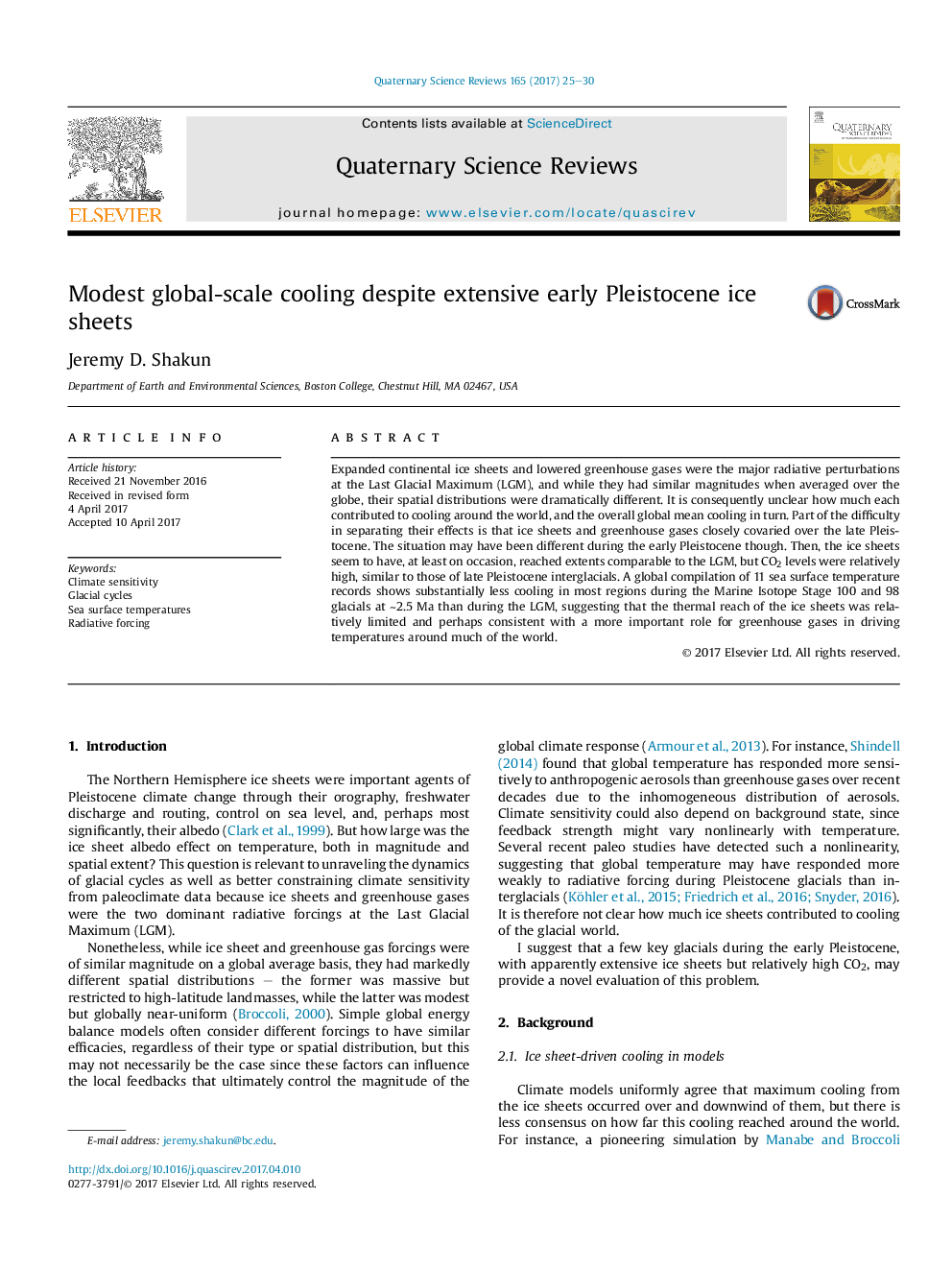| Article ID | Journal | Published Year | Pages | File Type |
|---|---|---|---|---|
| 5786735 | Quaternary Science Reviews | 2017 | 6 Pages |
Abstract
Expanded continental ice sheets and lowered greenhouse gases were the major radiative perturbations at the Last Glacial Maximum (LGM), and while they had similar magnitudes when averaged over the globe, their spatial distributions were dramatically different. It is consequently unclear how much each contributed to cooling around the world, and the overall global mean cooling in turn. Part of the difficulty in separating their effects is that ice sheets and greenhouse gases closely covaried over the late Pleistocene. The situation may have been different during the early Pleistocene though. Then, the ice sheets seem to have, at least on occasion, reached extents comparable to the LGM, but CO2 levels were relatively high, similar to those of late Pleistocene interglacials. A global compilation of 11 sea surface temperature records shows substantially less cooling in most regions during the Marine Isotope Stage 100 and 98 glacials at â¼2.5 Ma than during the LGM, suggesting that the thermal reach of the ice sheets was relatively limited and perhaps consistent with a more important role for greenhouse gases in driving temperatures around much of the world.
Related Topics
Physical Sciences and Engineering
Earth and Planetary Sciences
Geology
Authors
Jeremy D. Shakun,
